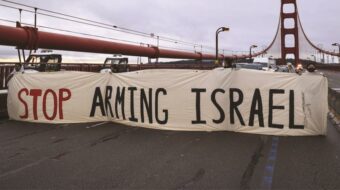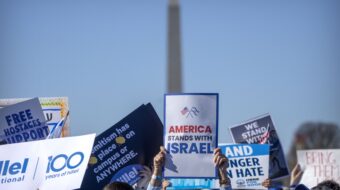
Alongside the cautiously optimistic view of U.S. military accomplishments in Afghanistan President Obama offered last week, other reports are offering a much soberer view of the campaign’s achievements and prospects for success.
Analysts are also considering how military actions can end in a way that leaves the Afghan people with the best chance to build a peaceful, politically and economically stable future.
While the administration was reporting “notable operational gains” in countering the Taliban and other armed insurgents, the International Committee of the Red Cross (ICRC) was warning that the “main conflict-related challenges” the Afghan people face – civilian casualties, internal displacement and inadequate access to medical care – will continue in 2011.
On Dec. 15, just before the administration reported on its review, Reto Stocker, who heads the ICRC’s Afghanistan office, said in a statement, “In a growing number of areas in the country, we are entering a new, rather murky phase in the conflict in which the proliferation of armed groups threatens the ability of humanitarian organizations to reach the people who need their help.”
Stocker said many people see fleeing as their only alternative, with many ending up in refugee camps or with relatives in neighboring districts. Together with the Afghan Red Crescent, the ICRC has provided food, water and other relief to 140,000 people throughout Afghanistan this year alone.
As the conflict has intensified and spread geographically, civilian casualties have risen compared with earlier years, Stocker said. Mirwais Regional Hospital in Kandahar, in an area where military operations have stepped up this year, has cared for over 2,650 wounded patients this year compared to 2,100 in 2009, he said.
Earlier this month Senate Intelligence Committee members were briefed on a new National Intelligence Estimate on Afghanistan. The Associated Press said officials, speaking on condition of anonymity, referred to “inkspots” of progress in places like the capital, Kabul, and parts of Helmand and Kandahar provinces where there are enough U.S. and NATO troops to maintain security. But, they said, other parts of the country are controlled by or vulnerable to armed insurgents.
The officials said U.S. efforts to build infrastructure and get security forces where they are needed are lagging. It was noted that the intelligence assessment was conducted earlier in the fall than the annual review on which the administration based its statements.
A Dec. 17 Inter Press Service report by investigative journalist Gareth Porter also cited increasingly brutal U.S. military tactics in the much-vaunted offensive in Kandahar Province during the fall.
Noting that the offensive, which captured three rural districts outside Kandahar City in October, was “opposed clearly and vocally” by the local provincial leadership, Porter said the operation “was accompanied by an array of military tactics marked by increased brutality,” notably large-scale demolition of houses that has outraged civilians.
In mid-December, 60 analysts, humanitarian workers, journalists, retired military officers and academics who focus on Afghanistan, including Porter, sent an open letter to President Obama, warning that a military solution is unrealistic.
With the war now costing the U.S. alone over $120 billion per year and the situation on the ground worsening, they called on Washington to move for a political solution by starting talks with the insurgents, “taking U.S. security interests into account.” The analysts said talks need to include Afghanistan’s neighbors, as well as representatives of Afghanistan’s provinces and local governments.
An even more detailed approach to a political settlement, by author and analyst Daryl Copeland, was posted by Foreign Policy in Focus in September.
Copeland proposes halting all combat operations, announcing the intent to seek a negotiated political solution with economic development as the top priority, and shifting the political lead to the United Nations – which, he says, “while imperfect, is clearly a more suitable choice.” An international peace conference under UN auspices would bring together all internal parties, regional states and organizations, and other countries including the U.S., Russia and India, “to rebuild confidence and trust and foster collaboration.”
Funds for military operations would be redirected to a “Marshall Plan” for Afghanistan, providing substantial resources to “appropriate” Afghan and international non-governmental organizations, with an initial focus on agriculture, energy and minerals to stimulate employment and growth.
Similar proposals were presented two years ago by Sept. 11 Families for Peaceful Tomorrows, calling for “a swift timetable” for U.S. and NATO withdrawal, an immediate end to air strikes, support for negotiations involving all parties, reforming aid and reconstruction efforts to prioritize Afghan organizations, investing in long-term economic efforts such as sustainable agriculture, and compensation for Afghan families and communities affected by U.S. military actions.
With the tenth anniversary of the war less than a year away, and casualties mounting daily among U.S. and NATO troops and Afghan civilians, it’s time to take these proposals seriously, for the sake of all concerned, in Afghanistan and here at home.
Image: American soldiers talk to an Afghan villager. International Security Assistance Force Media // CC BY 2.0












Comments